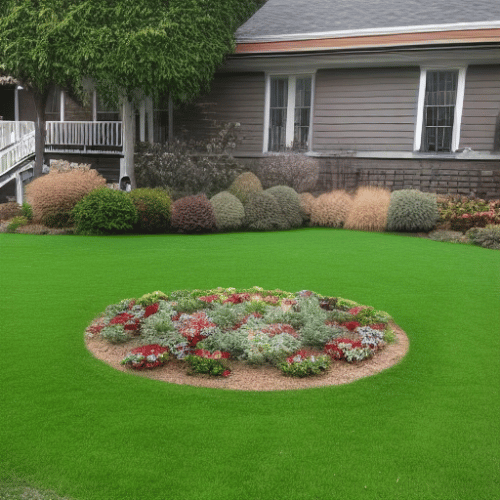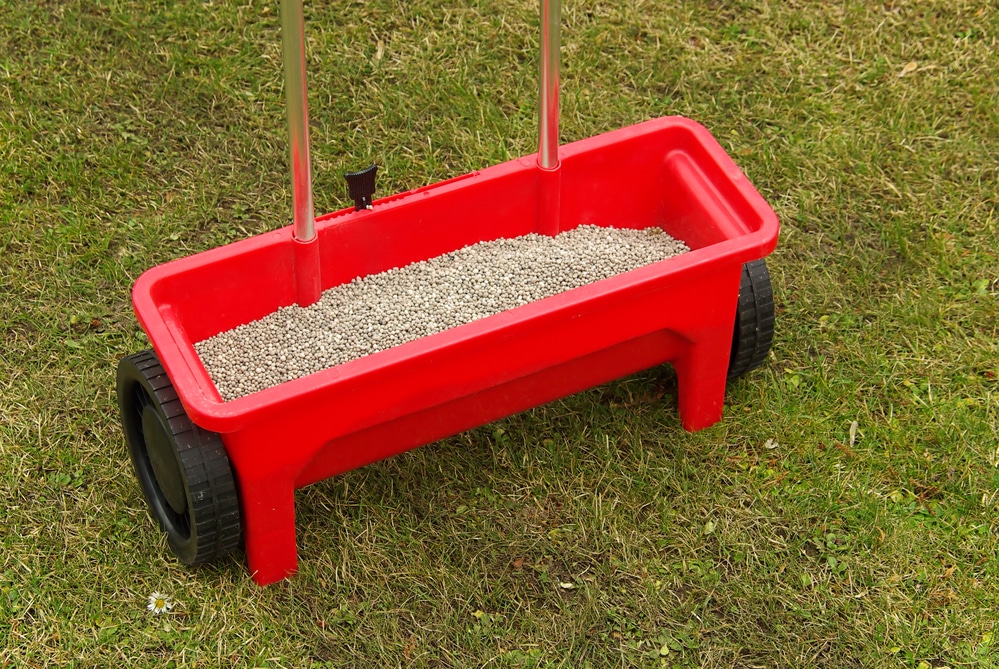Last Updated on
Want to know how to feed a lawn but looking for some expert advice first? In this article, we’ll guide you on caring for your lawn and helping you to achieve the best possible results. A healthy lawn will look great and add a great aesthetic to your garden for all to enjoy.
How to Choose Lawn Feed
Nutrients
Not all lawn fertilisers have the same nutrients, so you’ll need to consider the nutrient count when choosing the right one for you. Your lawn grasses require the following three nutrients: nitrogen, potassium, and phosphorus. Consider a lawn fertiliser with high nitrogen content, as this nutrient will keep your grass soft and green. It’ll also help to maintain your soil’s natural pH balance and keep your lawn resistant to droughts and pests.
Type of Grass

Before considering a lawn feed, ensure that you know what type of grassroots you have. For instance, Bermuda grass, which grows during the warmer months, requires less care than grasses that grow during the colder months, which need fertilisation twice a year. Additionally, some grass plants are prone to growing weeds, so you may need to purchase a grass product that’s a combination of fertiliser and weed killer.
Type of Soil
As well as the type of grass you have, you’ll need to consider the soil type in your backyard. For example, nutrient-rich soils enable good bacteria to grow with minimal effort and require less feed. Alternatively, poor soils will require more lawn feeds, which means that you’ll need to purchase a larger capacity and lawn fertiliser with a higher nutrient count.
Furthermore, depending on what type of soil you have, your lawn fertiliser might need more potassium or phosphorus to remain green and healthy.
Feeding Your Lawn Correctly
Now that you know some of the factors to consider when buying lawn fertilisers, let’s get to how to use your chosen product to enhance your garden.
Spring Feeding
When applying grass feed during early spring or summer, we recommend using a product that contains weed killer and moss killer, too. These ingredients will help your grass to grow healthily as well as preventing weeds from invading your garden.
After spring, you can transfer to a different type of lawn feed to keep your garden green and soft. If the outside temperature is high, you won’t need to feed your lawn. In fact, feeding your lawn with fertiliser in high heat can cause more damage than good. As a general rule, wait until your garden has had a good amount of rain before using fertiliser.
Autumn Feeding
During the autumn months, your grass will grow slower but will still remain green. However, lawn fertiliser is an essential part of gardening to maintain healthy roots that can withstand the colder temperature of the winter months approaching.
During this weather, you might encounter moss in your garden, which is why we recommend using a fertiliser that’s specific to the autumn months, as this will allow your garden to prepare for wet, cold months to follow. Additionally, autumn lawns will be low in nitrogen, so you’ll need to look for fertilisers containing this ingredient to encourage growth that’s soft and doesn’t have frost damage. Feeding during the late autumn months contributes to healthy roots, so don’t skip these months.
How to Use Lawn Feeds
Now that you’re better clued up on choosing the right lawn feed, let’s discuss how to use your fertiliser, including some of our top tips. Firstly, the actual process of fertilising your lawn can be challenging because you’ll need to apply the lawn food liberally and evenly for the best results. To help you do this without hiring a professional, you can purchase a handheld spreader, which is easy to use and comes in a standard rectangle shape. For large gardens, consider mechanical push-along spreaders if you have a lot of fertiliser to apply.
Furthermore, rotary spreaders feature a spinning mechanism that spits out fertiliser to feed the grass. For the best results, we suggest feeding your lawn right after mowing because this will give your lawn the ability to absorb the nutrients from the feeder before you mow again. You should also avoid mowing soon after applying the fertiliser because you might not have left enough time for the food to sink into the grass.
Additionally, don’t fertilise on dry turf because there should be some moisture present to help with absorbing the nutrients. In this case, you’ll need to consider the weather before you start your liquid feeds. You might also need to water the lawn after applying the fertiliser, but you should check the instructions that come with your fertiliser to see if this is applicable to the brand you chose.
You must apply the fertiliser to different proportions of your garden equally. And use the same amount per square metre for the best results. Applying too much lawn feed can scorch your lawn and lead to blackened results. This can also happen if you apply the feed onto dry grass, such as during summer. To assist you with the correct amount of fertiliser to allow your lawn to stay healthy, opt for a bottle with a slow-release design to prevent you from overpouring the feed onto your grass.
When to Apply Feed On Your Own Lawn
As briefly discussed earlier, each type of grass has different requirements, so there’s no one set frequency to apply a lawn feeder because you should do what is recommended for your grass. However, if you want a basic fertiliser treatment, you can purchase an annual fertiliser to feed your lawn every 12 months. These feeders are specifically designed to release nutrients slowly to keep your lawn fed from spring to winter without you having to keep on top of feeding continually.
What Are Your Go-to Fertilisers?
Encouraging good growth on your lawn involves caring for your soil and tailoring the fertiliser and application process to your specific grass and soil type. Knowing how to feed a lawn is maybe more difficult than you originally thought, but you shouldn’t have a problem finding what works with these guidelines.
Do you have a go-to fertiliser that you want to recommend? Share your tips in the comments.
Amy is a U.K.-based writer and editor with a penchant for helping consumers find the best home products for their needs, as well as providing easily digestible guides for living better at home. Her dedication to her work means she can usually be found elbow-deep in research or hunting down samples of the latest and greatest on behalf of her readers.
An avid DIYer herself, Amy’s passion lies in teaching others how they too can achieve their dream homes by tackling some of those pesky projects themselves! Whether it’s building furniture from scratch or turning an old dresser into a coffee table, Amy is always happy to share what she knows about making your house feel like home without spending a fortune.



